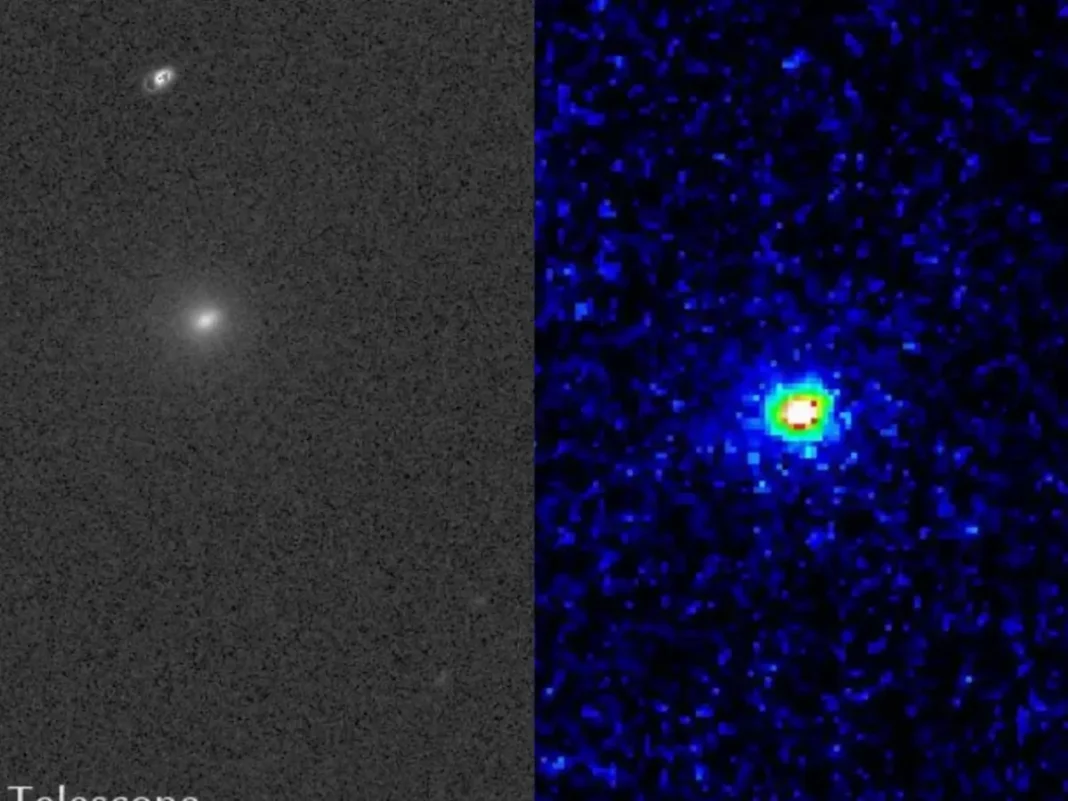Key Takeaways
- Harvard scientist Avi Loeb calculates just a 1 in 100 million chance that 3I/ATLAS is a natural comet
- Mysterious sunward jets and a complex structure with at least 7 jets defy normal comet behaviour
- First-ever radio signals detected from the interstellar object
- No existing space probes can intercept or study the mysterious jets
The interstellar object 3I/ATLAS continues to baffle scientists with increasingly strange behaviour, leading a prominent Harvard astronomer to declare there’s only a 1 in 100 million chance it’s a natural comet. New observations reveal mysterious jets shooting toward the Sun and a complex structure unlike anything seen in regular comets.
Scientific Community Stunned by Sunward Jets
Recent photographs of 3I/ATLAS show jets shooting out of the object in multiple directions, including toward the Sun. While the object does have a tail, the presence of these sunward jets – called anti-tails – is completely unprecedented in regular comet behaviour.
Since its discovery in July, 3I/ATLAS has displayed multiple anomalies. Its tail has rarely appeared in images, and it underwent dramatic changes near the Sun in late October. The object turned bluer than the Sun, became extremely bright, displayed non-gravitational acceleration, suddenly sped up, and changed its path.
Space Probes Cannot Study the Mysterious Jets
The scientific mystery deepens with the realization that no existing space probes can intercept or study the jets emanating from 3I/ATLAS. The jet structure extends so far that even when the object is nearest to Earth, it will be 269 million kilometres away – about 100 times larger than the jet structure itself.
Earth-based satellite particle probes cannot capture particles from the jets, and NASA’s Juno spacecraft around Jupiter will be 53 million kilometres away in March next year, making interception impossible.
Could This Be Evidence of Technology?
Harvard scientist Avi Loeb, who has been suspicious of 3I/ATLAS since its discovery, finds the jet evidence particularly compelling. In his blog, he posed the critical question:
“Is the network of jets associated with pockets of ice on the surface of a natural cometary nucleus, or are they coming from a set of jet thrusters used for navigation of a spacecraft?”
Complex Structure Reveals Multiple Jets
Images released by astronomers M. Jäger, G. Rhemann and E. Prosperi reveal an extraordinarily complex jet structure. The photos show a large glowing halo extending half a million kilometres, with at least seven distinct jets, some of which are anti-tails pointing sunward.
First Radio Signal Detection
Adding to the mystery, the MeerKAT radio telescope in South Africa detected the first radio signal from 3I/ATLAS on October 24. The telescope picked up radio absorption lines by hydroxyl radicals (OH molecules). Previous attempts to detect signals on September 20 and 28, 2025, had found nothing, making this the first radio detection since the object’s discovery on July 1.
The Statistical Case Against Natural Origins
New photos from November 9 show both a jet toward the Sun and a longer tail. Based on these observations and calculations, Loeb estimates the interstellar object has a mass exceeding 50 billion tons. He notes that an object with a diameter above 10 kilometres entering our solar system occurs only once every ten thousand years or longer.
Combining this rarity with the “0.2% probability of the retrograde trajectory of 3I/ATLAS being aligned to within 5 degrees with the ecliptic plane” gives the object a one in a hundred million chance of being a natural comet.





